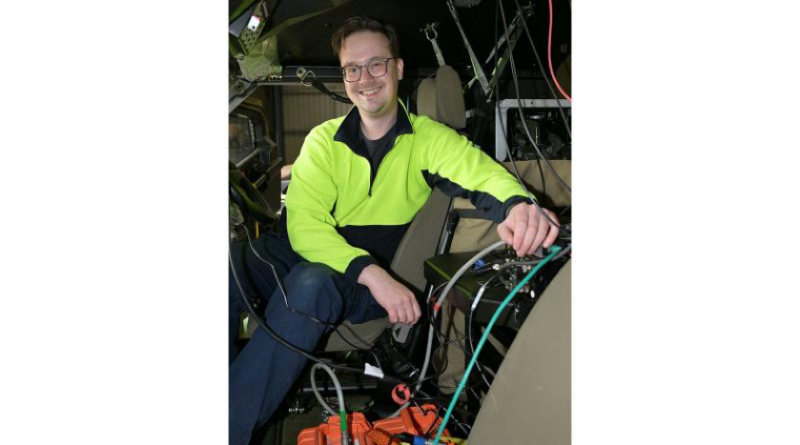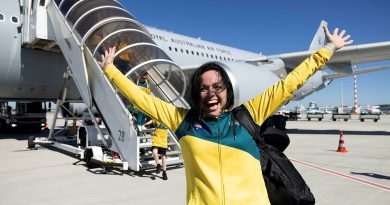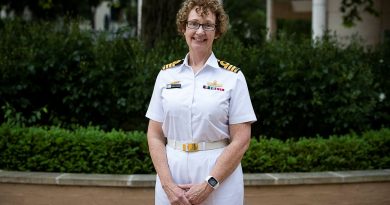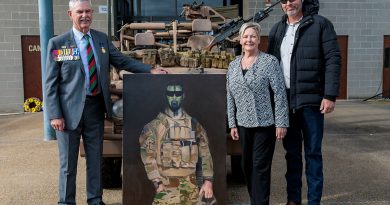Engineer tests limits in the fast lane

Driving a vehicle faster and faster over rough terrain, sending traffic cones flying while testing a vehicle to its limits – it’s understandable why Alexander Mazur enjoys his role as an engineer with Prototype and Test Services, Land Engineering Agency.
CAPTION: Alexander Mazur, an engineer with Prototype and Test Services, Land Engineering Agency, sits in a Defence vehicle at the Monegeetta Proving Ground near Melbourne. Story by Flight Lieutenant Marina Power. Photo by Matthew Ayres.
The agency provides a wide range of engineering services to Land Systems Division, Capability Acquisition and Sustainment Group (CASG), and supports anything from tents to tanks.
This involves testing and evaluating a variety of complex land-based capabilities such as weapons, surveillance systems, combat clothing, communications, logistics and armoured vehicle systems.
Taking place at the Monegeetta Proving Ground, 40 minutes north of Melbourne, Mr Mazur and his team do tests on everything from rough-terrain vehicles and small off-road ATVs to Boxer 8×8 combat reconnaissance vehicles and Redback infantry fighting vehicles.
“The work is really varied and we get to do some cool things testing noise and acoustics, vibration and vehicles, including the testing of prototypes and equipment during the acquisition process,” Mr Mazur said.
“I find the job really interesting. There is a technical challenge every day or week with unique problems I can solve by interpreting data and helping people make decisions – it’s incredibly satisfying.”
Depending on the tests, the equipment differs and Mr Mazur said it usually involved some pretty cool hardware.
When testing vehicles, they install a special steering wheel, sensors, microphones, seat pads (measuring vibrations) and accelerometers (detecting acceleration).
“I am usually in the passenger seat, monitoring the sensors and data in real time and instructing the test driver to go faster and slower to really push the vehicle to its limits,” he said.
One of the main tests is a double lane change to see how a vehicle performs when an obstacle appears on the road and the driver has to evade and change lanes.
“It’s a point of pride to me that we’ve never had a vehicle roll over during a test. I have a lot of sensors which tell me when we are approaching that point of danger and we can take it down a notch to make sure it’s safe,” Mr Mazur said.
“Although that kind of test usually means a lot of traffic cone casualties, and we set up what we call a ‘cone field hospital’ where the cones [or witches hats, depending what state you are from] go to be triaged and pulled back into shape or pass on to cone heaven.”
The team has tested the effects on a missile being transported over a rough off-road track.
“That particular test involved over 120 different cables and accelerometer sensors all over a dummy missile and some pretty rough four-wheel-driving to simulate real conditions,” Mr Mazur said.
Growing up in Floreat, Perth, where he did a double science degree in physics and mechatronic engineering at the University of Western Australia, Mr Mazur wasn’t looking for a career in Defence until he applied to join the CASG Graduate Engineering Program in 2017.
“A lot of people I know have gone into mining and oil companies and similar industries, especially coming from Perth,” Mr Mazur said.
Now living in Sunbury, north of Melbourne, Mr Mazur loves the hands-on aspects of his job.
“I’m so glad I was selected for the program from over 1000 applicants. I got to work on a range of projects in Perth, Canberra and Melbourne,” he said.
“I particularly enjoyed the work in Melbourne so much, I made the choice to move down here.
“Working as an engineer, I always imagined it would be working in the office, and it’s quite rare to get to do hands-on testing like we do here. This is why I love my job. I get to do all the fun science in the field with a balance of analysing the data on my laptop, whether that’s at a test site or at the office.”
The job also takes him around Australia.
“Just a month ago I was at RAAF Base Williamtown, NSW, working with the Air Force on testing the volume of the Hawk 127 communications systems,” Mr Mazur said.
“And I had a go at a flying simulator piloting a fast jet … for scientific purposes of course.”
.
.

.
.





